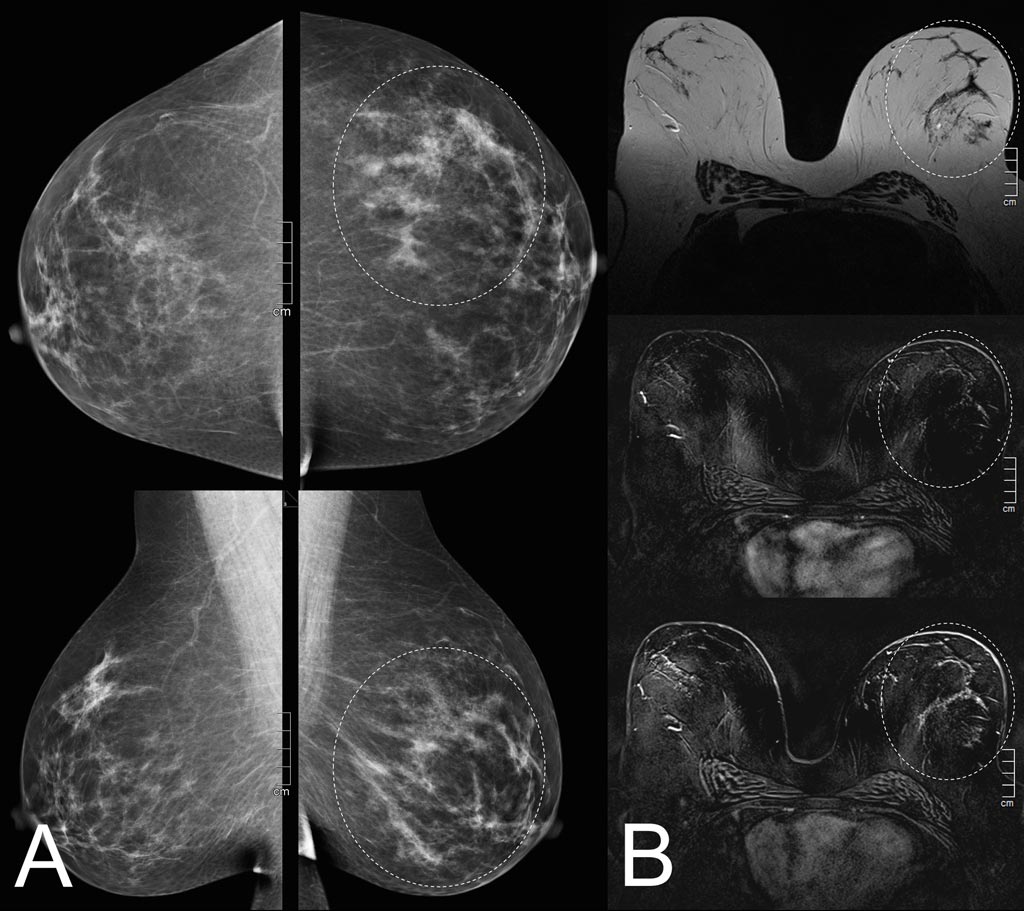MRI Helps Interpret Ambiguous Mammography Results
By MedImaging International staff writers
Posted on 13 Feb 2018
A new study shows that magnetic resonance imaging (MRI) is the best choice for clarifying ambiguous mammography tests.Posted on 13 Feb 2018
Researchers at the Medical University of Vienna (MedUni; Austria) and Diagnostikum Graz (Austria) conducted a retrospective study of 302 consecutive women (mean age 50 years) who underwent 3T breast MRI as an additional workup to conventional and clinical mammography findings. The aim of the study was to investigate diagnostic performance and incidental lesion yield when using MRI as a problem-solving tool. All images were read by experienced, board-certified radiologists, with the reference standard being histopathology or follow-up after two years.

Image: Mammography (A) and MRI (B) reveal a suspicious finding is only mild background enhancement (Photo courtesy of MedUni).
The researchers also developed a multiparametric protocol, which allows the examination of up to four patients per hour. The results revealed 53 true-positive, 243 true-negative, 20 false-positive, and two false-negative breast MRI findings. In 16 (5.3%) of all patients, incidental MRI lesions were detected, 37.5% of which were found to be malignant. Breast composition and the imaging findings that had led to referral in the first place had no significant influence on the diagnostic performance of breast MRI. The study was published on January 2, 2018, in PLOS One.
"MRI clearly shows whether findings are benign or malignant. Not only was MRI able to definitively characterize ambiguous findings as either benign or malignant but, on top of this, we were able to detect additional, previously undiscovered, malignant tumors,” said lead author Claudio Spick, of MedUni Vienna. “MRI scans are therefore an ideal, non-invasive and equivalent alternative to painful breast biopsies; moreover, in around five percent of cases they identify previously undetected malignant tumors.”
While breast MRI provides a very high sensitivity and negative predictive value, particularly in non-calcified breast lesions, problem-solving definitions are not well defined, and the empirical evidence about specific indications, such as architectural distortions, is sparse.
Related Links:
Medical University of Vienna
Diagnostikum Graz














